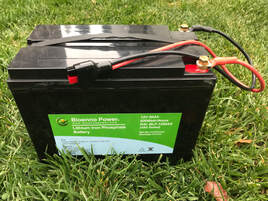 Having previously tested and reviewed lithium powered solar generators from Jackery and Bluetti I wanted to test a simple lithium battery as an alternative power solution when in the field. Solar generators are convenient as they come with all of the power ports, a display, power meter, AC inverters, etc. But not everyone needs all of that in which case a stand alone lithium battery may be the better solution. Fortunately, the folks at Bioenno Power were kind enough to send one of their 50Ah LiFePO4 batteries to me to test along with one of their 100W solar panels, a solar charge controller and a 10A lithium AC charger. Battery Basics The first thing to note about Bioenno Power is that they are located in Santa Ana, California and can be easily reached on the telephone for sales and technical support. That is how I reached the owner, Kevin, who advised me on the equipment that I would need. Like most other lithium power suppliers, Bioenno Power products are manufactured in China, but tested at and distributed from their facility in California. Bioenno Power sells a wide range of lithium battery capacities from 3Ah to 300Ah. The 50Ah battery I got comes with integrated Anderson Power Pole connectors which made it easy to connect to my Power Distribution Hub with a simple adapter cable which converts from Power Pole to 5.5mm x 2.1mm connectors. If you do not like the Power Pole cable you can simply add your own cable like you would on any other battery. If you prefer, you can even use a Power Pole to Cigarette socket cable. The battery is compact with dimensions of 8.4" (L) x 4.3" (w) x 5.8" (H). It weighs only 13.3lbs. and has an integrated plastic carrying strap which makes it a breeze to transport back and forth into the field. It is rated for >2000 charge cycles which is typical of LiFePO4 batteries. Like all lithium batteries, this one has an internal module, which they call the Protection Circuit Module (PCM) to provide overall protection from unsafe operating conditions such as low and high temperature charging, short circuits, overvoltage, etc. It also has the responsibility to balance the individual cells inside so that no cell gets discharged before the others. It sounds like their PCM is just what the industry typically calls a Battery Management System or BMS. One of the great this about a BMS is it allows the battery to supply the full capacity (100%) without damaging the individual cells inside in contrast with a lead acid battery which should be re-charged once it has depleted 50% of its capacity. The PCM (BMS) will shut the battery down to prevent the individual cells inside from being damaged when they reach a minimum voltage. Capacity & Discharge Voltage Tests Like most LiFePO4 batteries, the Bioenno battery uses cylindrical LiFePO4 cells which have a nominal voltage of 3.6 to 3.7V. Multiple cells are connected in parallel banks to supply the rated Ah or Wh capacity and then 4 of the banks are connected in series to give the nominal full charge voltage of 12.8 to 13.2V. Thus, the number of cells in the battery is determined by the Ah rating of the individual cells which indicates that this battery has 4 stacks in series of 16 cells in parallel for 64 cells total. My first test was full discharge capacity test to see how the battery compared against its manufacturer's spec of 50Ah, or 640Wh. I used a constant 65w load which is representative of a typical astroimaging setup with a dew heater and cooled camera. This is a little over 5A, or 1/10 C which means it is not stressing the battery which is designed to deliver 1C, or 50A in 1 hour. The test was performed 3 times and the results were very consistent providing 47.6Ah (606Wh) which is 95% of the rated capacity of 50Ah. That is well within their specs and typical for lithium batteries where the BMS (PCM) shuts the battery down to reserve power to keep the BMS functioning for the battery re-charge cycle. The discharge curve voltage shows that the battery voltage stays above 12.0V through 91% of its rated capacity of 50Ah (96% of my measured capacity of 47.6Ah). This slow voltage roll-off is one of the advantages of Li batteries compared to lead acid which drops below 12.0V just below 50% capacity. 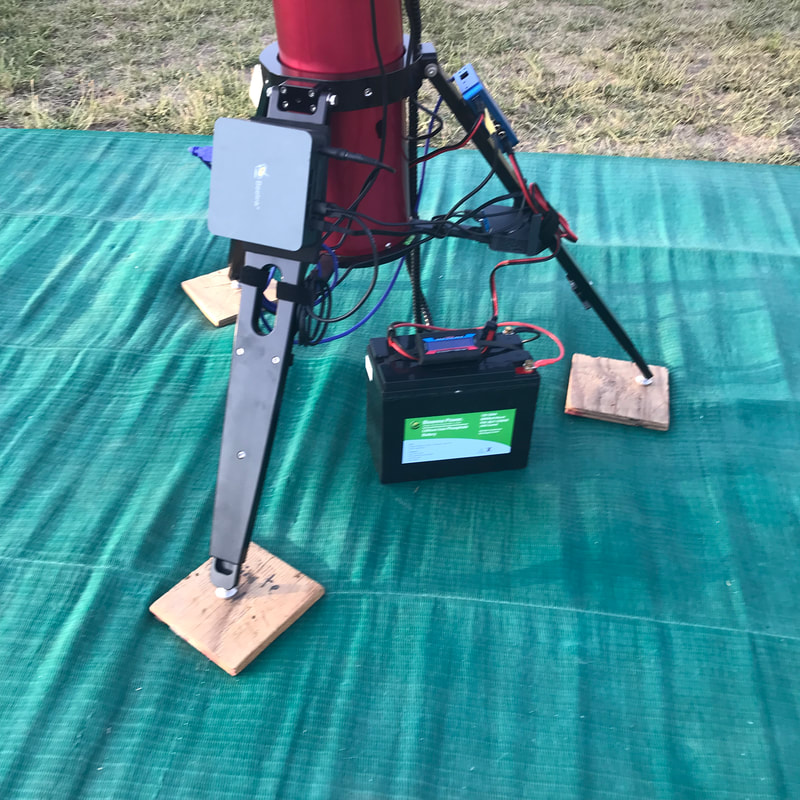 Field Tests After initial testing of the battery on my setup at home, I took it with me to a dark site for three nights under the stars. I used the Anderson Power Pole leads from the battery to connect to an in-line power meter which kept track of the number of Ah and Wh used so that I could match that against the capacity I had measured to keep track of the remaining capacity after a night's use. The output of the power meter feeds into my Pegasus Power Box Advanced (PPBA) which then feeds power to the rest of my equipment. The PPBA has its own internal power meter so, in my case, I did not actually need the external power meter but chose to use it to show those who do not have the Pegasus how to measure the power used with an inexpensive (~$15) meter. The Bioenno Power battery supplied power to the entire setup which included: 1. Pegasus Power Box Advanced Power/USB Hub 2. 12V to 48V DC-DC converter for power to the MyT mount 3. ASI1600 guide uncooled camera - powered through the mount 4. ASI224MC guide camera - powered through the mount 5. Celestron Motorized focuser - powered through the mount 6. Cooling fans for the Celestron C11 SCT - powered through the mount 7. Beelink U57 Mini-PC 8. GL.iNET AR750 portable wireless router The Beelink controlled everything using The Sky X including guiding and imaging. I connected wirelessly over the GL.iNET WiFi to the Beelink with my Dell 15.4" laptop to monitor activity, but the laptop was powered by a separate power supply for this set of tests. The average power draw with this setup was only 30W, which is representative of many typical setups with uncooled cameras and no dew heater. We will discuss more power hungry setups below. I was able to image for 2 nights (3rd night was a bust for other reasons) for a total of just under 12 hours. Based upon my initial capacity measurement and the in-line watt meter, 57% of the capacity was used over that period. That means that the Bioenno battery could last for just over 20hrs at 30W without a re-charge. Now my setup did not include a cooled camera nor a dew heater which are very common and can draw between 10 and 20W each, on average. Also, if I had used my Dell laptop to run everything, the total power consumed would be much higher. To address these situations, I performed measurements of the power draw for these additional equipment and put together a table with 3 increasingly power hungry setups to estimate the run time for this Bioenno 50Ah battery for each setup. From that, you can estimate the run time for your particular setup as well. As you can see from the table, adding a dew heater and camera cooling can drive the power consumption up to 60W or slightly more. In that case, this battery would last for one long night or two shorter nights without the need to re-charge. If one needs to use the power hungry laptop instead of a Raspberry Pi or mini-pc, 50Ah may not be sufficient capacity. This leads us to the question of re-charging the Bioenno battery. 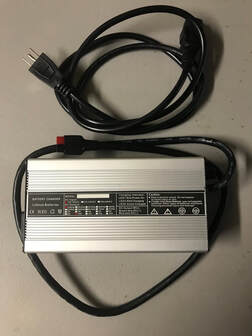 Re-Charging There are two basic ways to re-charge a lithium battery; 1) with an AC charger designed for lithium batteries; 2) with a solar panel(s) and a solar charge controller. You can get a 10A, 15A or 20A charger from Bioenno which has Anderson Power Pole connectors to conveniently connect to the battery. They sent their 10A charger to me which is very simple to use. Just connect the Power Pole connectors to the battery and plug in the charger. Since it is already set for lithium batteries it will use the correct charging cycle and shut itself off when completed. In my case, I was able to re-charge from 0% SOC to 100% SOC in 4.7hrs. The higher amperage chargers will charge in correspondingly shorter times. Since we do not always have access to AC power in the field, we usually need to use a solar panel to recharge a battery. I recharged the Bioenno battery with 2 different 100W solar panels, one each from Jackery and Bioenno. When charging a stand alone battery with a solar panel, a solar charge controller is required such as this 30A MPPT controller that Bioenno sent to me. To use it, you will have to add a pair of wires to connect from the solar panel to the charge controller and from the charge controller to the battery. Always connect the battery first and the solar panel last. In my case, I used these pre-made Power Pole Adapters from Bioenno, but you can make your own cableswith Power Pole connectors, a crimper and zip cord from West Mountain Radio. You can get all of the components needed from any number of suppliers on Amazon for less, but I have found that the genuine Anderson Power Poles work best. Both panels were able to re-charge the battery in 8hrs with full sun. The Jackery is an extremely well designed bi-fold panel which I previously reviewed here. But at $300 it is more expensive than the Bioenno panel at $210 and requires an 8mm to Anderson Power Pole Adapter which are difficult to find. The Bioenno panel is also well designed, folds out into 4 segments for a smaller footprint, and comes with a 50A Power Pole connector. The later means that you will need a 50A to 45A Power Pole adapter cable to connect the solar panel to the charge controller. Summary
The Bioenno Power 50Ah LiFePO4 battery performed well both at home and out in the field as expected. Because of it's small form factor and light weight, the Bioenno battery works well for someone needing 30W or less for 2 or 3 nights in the field without the need to recharge. For larger power requirements you will need to invest in solar charging equipment to re-charge during the day if you want to run for multiple nights in the field. What I like about the Bioenno Power 50Ah Battery: 1. US sales and technical support 2. Delivers 91% of its rated capacity at 12.0V or higher 3. Small, lightweight form factor 4. Comes with Anderson Power Pole cables 5. 2 year warranty and 30 day return policy What I do not like: 1. $470 for 50Ah is expensive compared to some of the Chinese brands like Ampertime, but not compared to other US based retailers like Battleborn and Dakota lithium. So it comes down to whether or not you are looking for the cheapest option, or a good battery with US support that is easy to reach if you need it. I was not paid by Bioenno for this review nor did they have any input to it but they did send the equipment at my request and at no charge to me. Amazon links are associate links from which I can earn a commission. Edit: You can find a video version of my Bioenno Power battery review on my YouTube Channel
3 Comments
|
Categories
All
Archives
January 2024
|
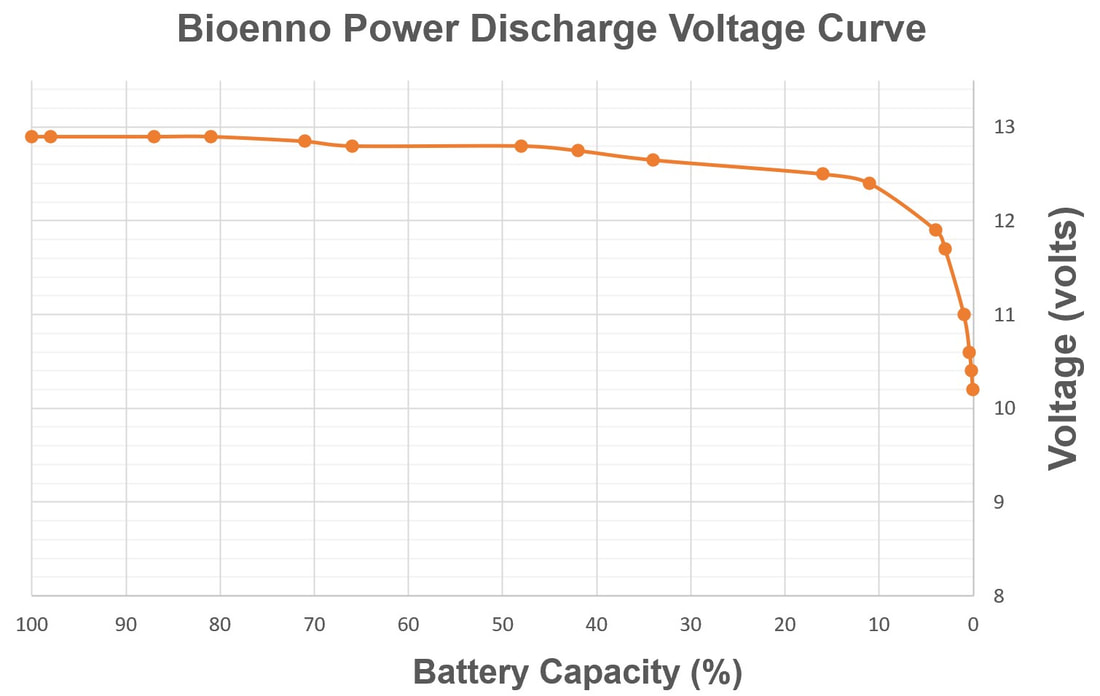
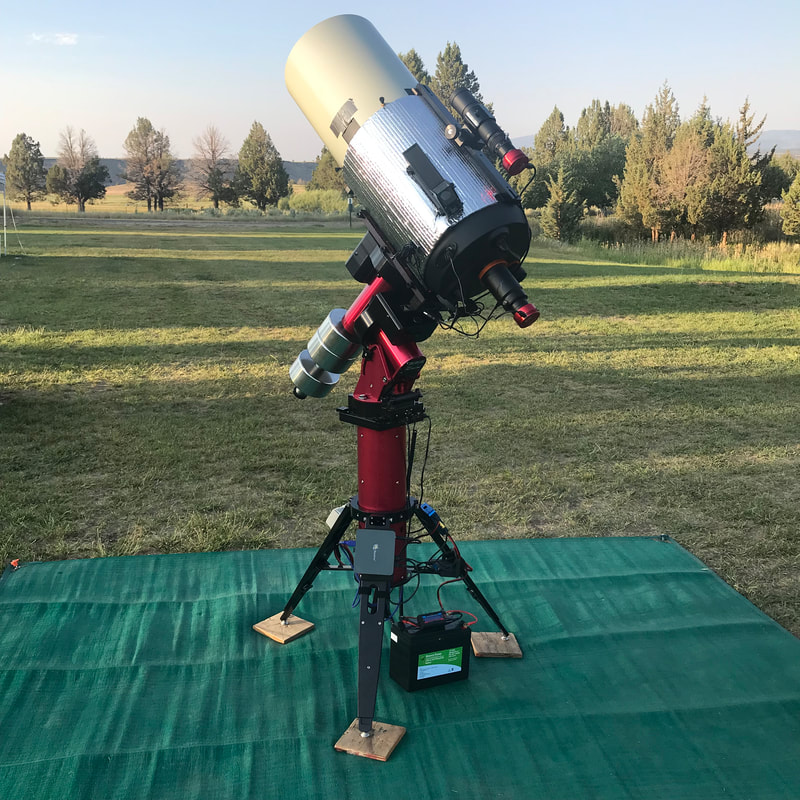
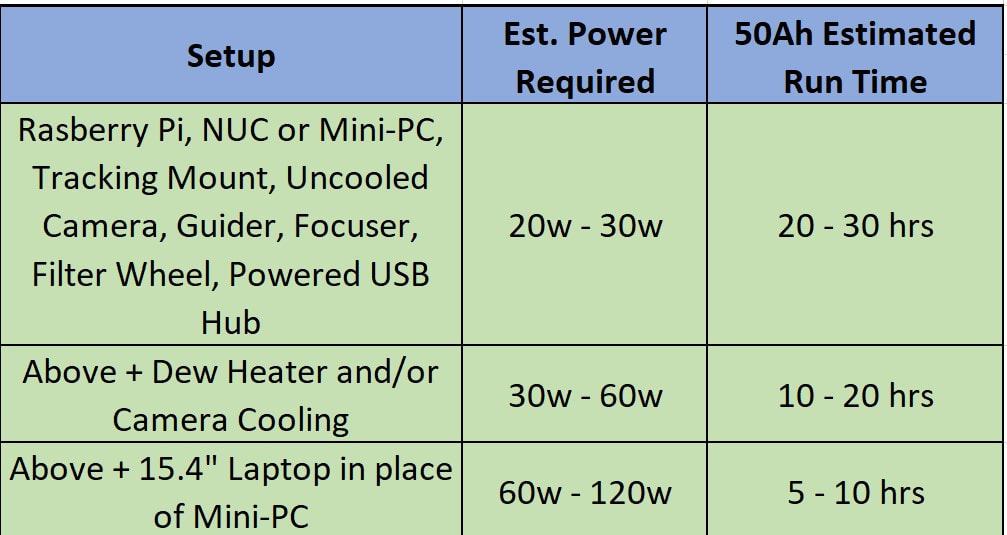
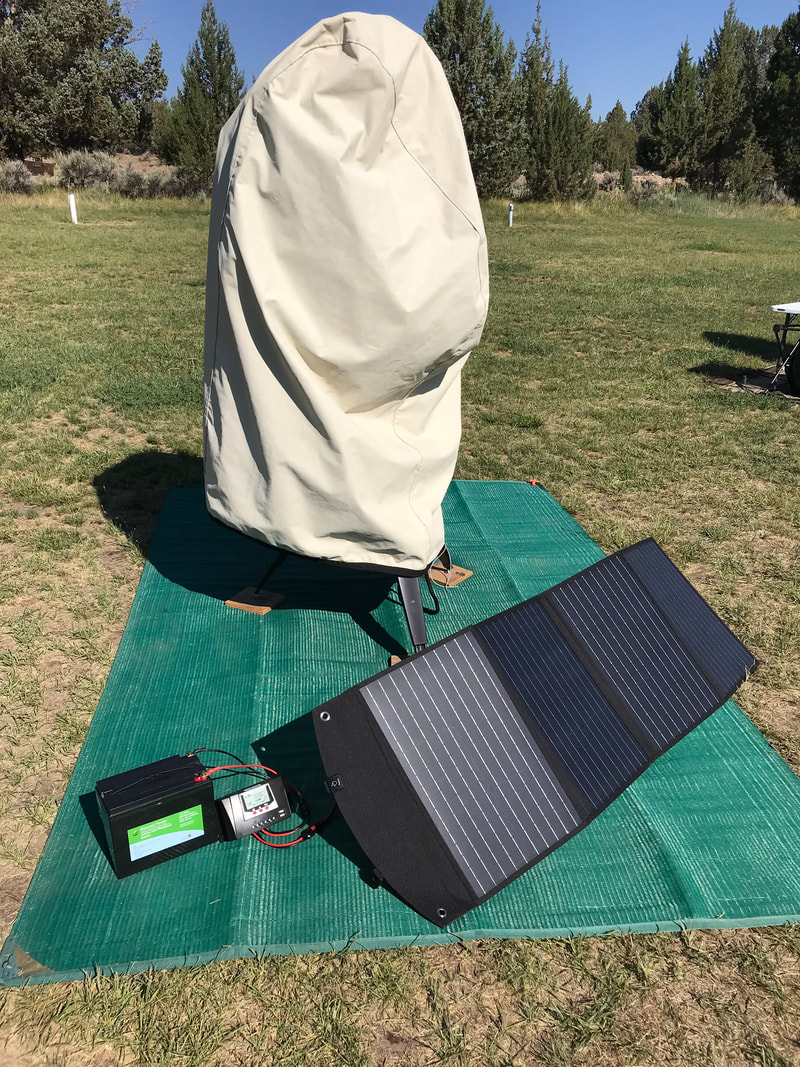
 RSS Feed
RSS Feed